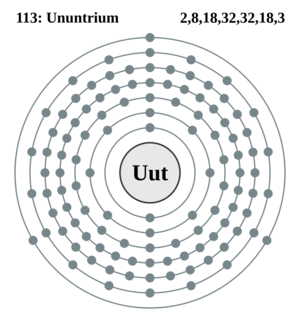Bacteria-repelling catheters, and element 113
Interview with
Bacteria-repelling catheters
Bacteria and other debris can become stuck to catheters inserted into the body, potentially causing infection and blood clots, also known as thrombis, to develop. Now a group of researchers across several American Universities and Semprus Biosciences, have developed a technology that could solve this problem. The team developed a catheter that creates a water barrier on its surface, which prevents blood platelets and bacteria sticking to the device. Co-author Chris Loose explained the importance of the technology.
Chris - This work is important because there's a whole host of medical devices that have complications in body, whether they're related to bacteria or related to blood clotting. So we see this as a really broad problem and this is really a first step we're showing technology has a nice long lasting performance benefits for reducing both this bacteria as well as thrombis over multiple months of blood product exposure, so a dual functionality and a long term. In laboratory trials, the new device had 99% less unwanted material attached to it than conventional catheters, even when left in place for 60 days. The work was published in Science Translational Medicine.
Element 113 found

The previously highly elusive element 113 has been discovered by Japanese scientists at the Riken laboratory, after 9 years of work.
The highly unstable and short-lived element was made by firing millions of atoms of a lighter element at a heavier one and observing the decay chains of the atoms created from the collision.
However, it's not certain that the Japanese team, publishing in the Journal of the Physical Society of Japan, will be able to claim the discovery, as other groups in Russia and the US have also made claims to element 113, and any new discovery must be ratified by a working group of the International Union of Pure and Applied Chemistry, Iupac, as Dr. Phillip Broadwith from the Royal Society of Chemistry, explained:
Phillip - There are other groups which may also have claims towards element 113, so it depends whose evidence the working group decides is the most convincing and which came first, as to who gets to name the element.
Dissolving electronics
A group of engineers have created implantable electrical devices that harmlessly dissolve after a pre-determined time period removing the need for further surgery to remove them.
The devices use materials that are already used in the body, such as magnesium, which is currently used in the form of stents to keep arteries open, and a form of silk, currently used for stitches. The thickness of a layer of magnesium oxide covering the implants controls how long they function for, as this substance dissolves at a known rate within the body.
Prof. John Rogers of the University of Illinois, an author of the paper in Science and a member of the multi-university team, explained the challenges the devices needed to solve:
Improving snail memory...with chocolate
And finally...the memories of pond snails have been improved by giving them a chemical found in chocolate, green tea and blueberries.
Researchers at the University of Calgary, Canada, trained the water-dwelling snails to essentially, hold their breath while immersed in water, with or without the chemical epicatechin dissolved in it. They then tested the snails' ability to remember the training, at regular intervals, and found that those immersed in the chemical-containing water could remember the training, for days, instead of hours afterward.
Co-author Professor Ken Lukowiak explained what was happening:
That work was published in the Journal of Experimental Biology.
References
- Previous Catalytic Clothing Cleans Polluted Air
- Next News from the RAS










Comments
Add a comment